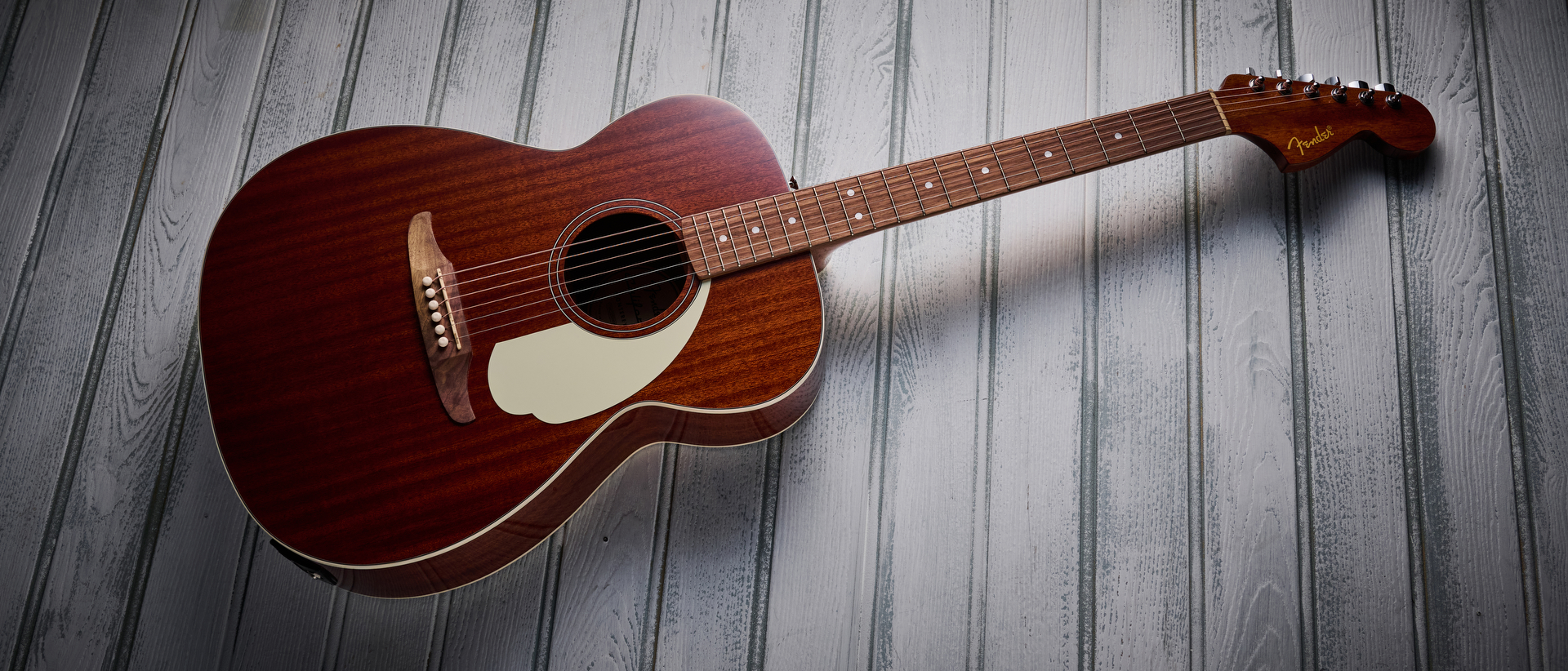Best Gibson Les Paul 2025: The greatest Gibson singlecuts for every budget and style
We break down the latest offerings from Gibson to help you pick the right Les Paul for you
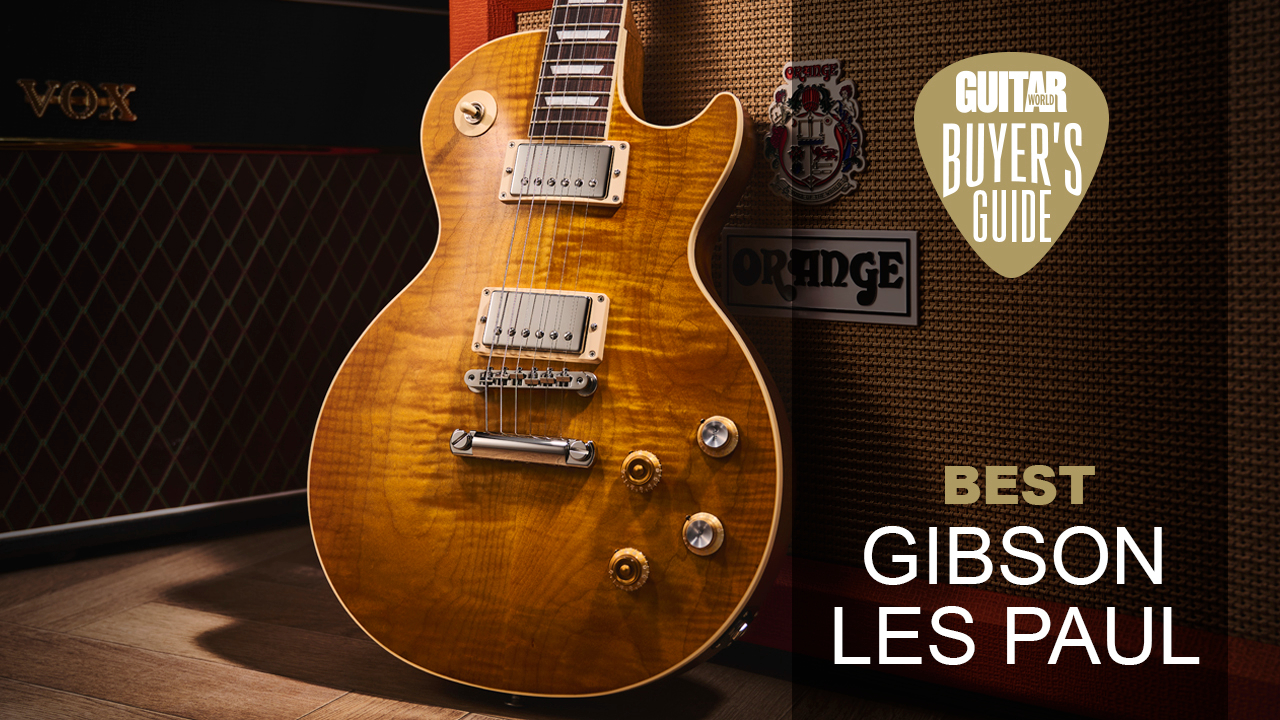
The Gibson Les Paul - the guitar, the myth, the legend. This genuinely iconic electric guitar has had a rather large hand in shaping rock 'n' roll ever since it was released way back in 1952. Many of the biggest axe-wielding stars from Slash and Gary Moore to Billy Gibbons and Jimmy Page have opted to make this single-cut beauty their number-one guitar and, as a result, have firmly cemented Les Paul's place in music history.
With the Les Paul being so popular for so long, it would stand to reason that there's a myriad of different options available. We know this can get a little confusing. That’s why we've put together this handy guide to the best Les Pauls you can buy right now at various price points. We have also listed them in order of series, from the budget-friendly Tribute to the high-end Murphy Labs custom shop model, to make it a little easier to navigate.
We know that the guitar marketplace is awash with incredibly well-built single-cut guitars from the likes of PRS, Heritage, and ESP, to name a few. Still, we’re solely focussing on Gibson for this article. So, with that being said, let’s dive into our Gibson Les Paul buyer’s guide right now.
Our top picks
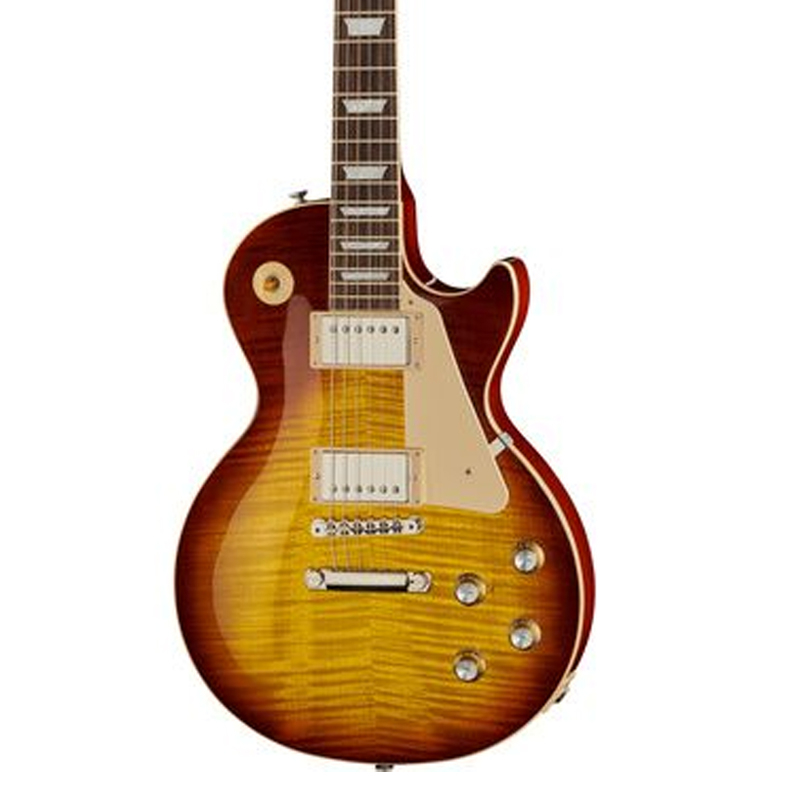
The Standard is Gibson's flagship Les Paul and arguably the most iconic. From its beautiful flame maple top, bound body, and mother of pearl Gibson logo to the throaty mid-range bite of its humbucking pickups, this guitar sounds just as good as it looks.
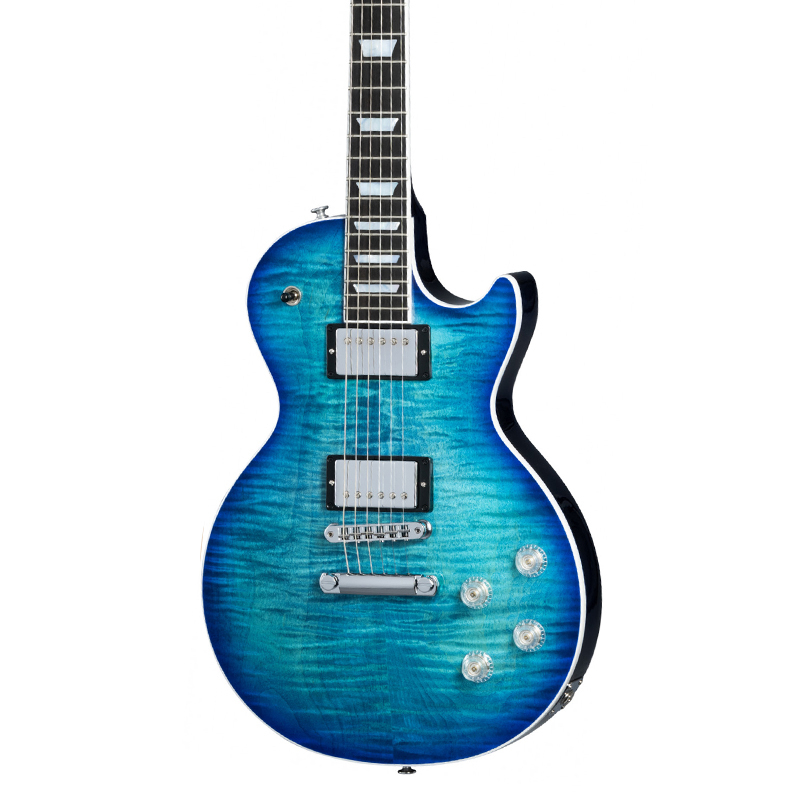
Gibson has always been cutting-edge, and the Les Paul Modern proves they are still innovating. This contemporary instrument is loaded with features that take the Les Paul into a new sonic place.
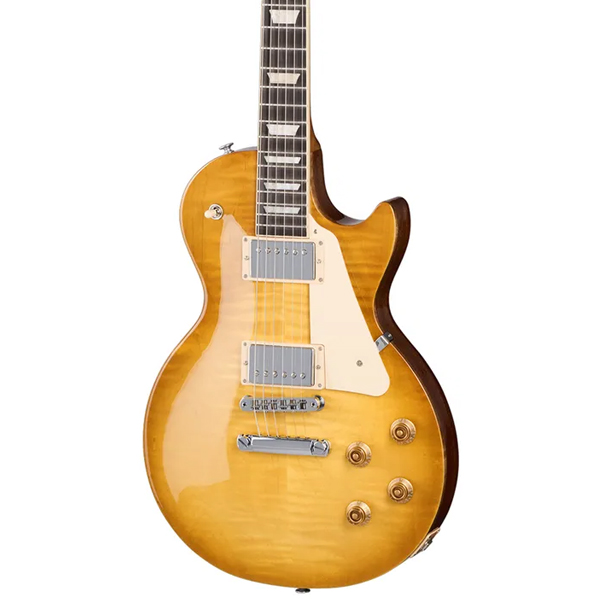
The Gibson Les Paul Studio Session is a stripped-down rock 'n' roll machine at its heart. This guitar includes all of the Les Paul's most essential elements while featuring a myriad of modern features, making it the perfect option for the player looking for a versatile studio companion.
Best Les Paul overall
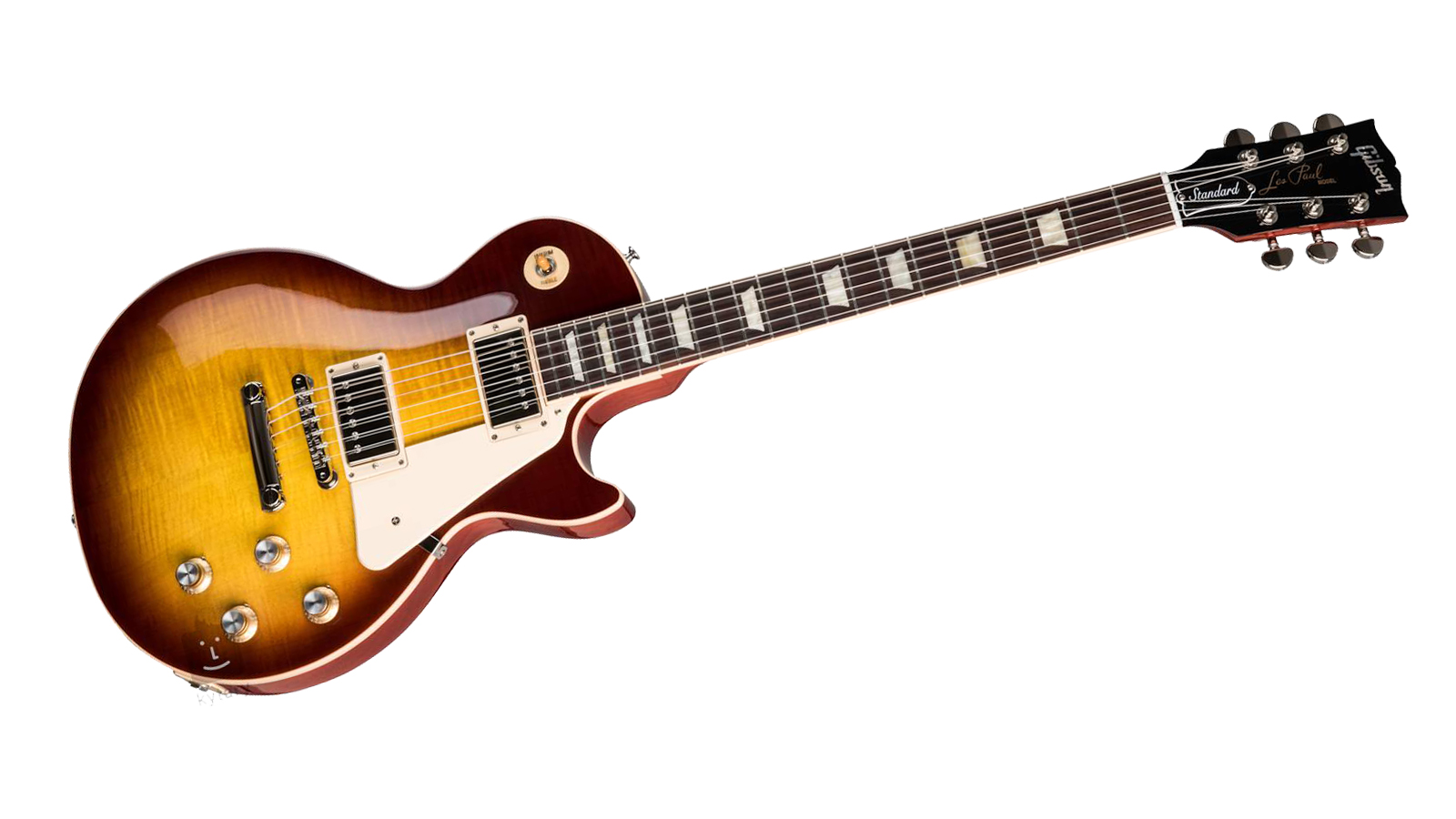
1. Gibson Les Paul Standard '60s
Our expert review:
Specifications
Reasons to buy
Reasons to avoid
The Standard is Gibson's flagship Les Paul and arguably the most iconic. From its beautiful flame maple top, bound body, and mother of pearl Gibson logo to the throaty mid-range bite of its humbucking pickups, this guitar sounds just as good as it looks.
The introduction of the original series saw Gibson go back to what made their guitars so legendary in the first place. No more robot tuners, PCB quick connect pots, or extra wide necks, just simple, elegant guitars. The Les Paul Standard 60's features a solid mahogany body with a stunning AA figured maple top and an incredibly playable slim taper 60's-style mahogany neck with a rosewood fingerboard and trapezoid inlays.
The Gibson Les Paul Standard 60's is easily one of the best options if you’re looking for a new Les Paul. This guitar certainly impresses with its beautiful looks and killer tones. So, if you're unsure which is the best Les Paul to go for, you can't go wrong with a Les Paul Standard.
Best for modern tones
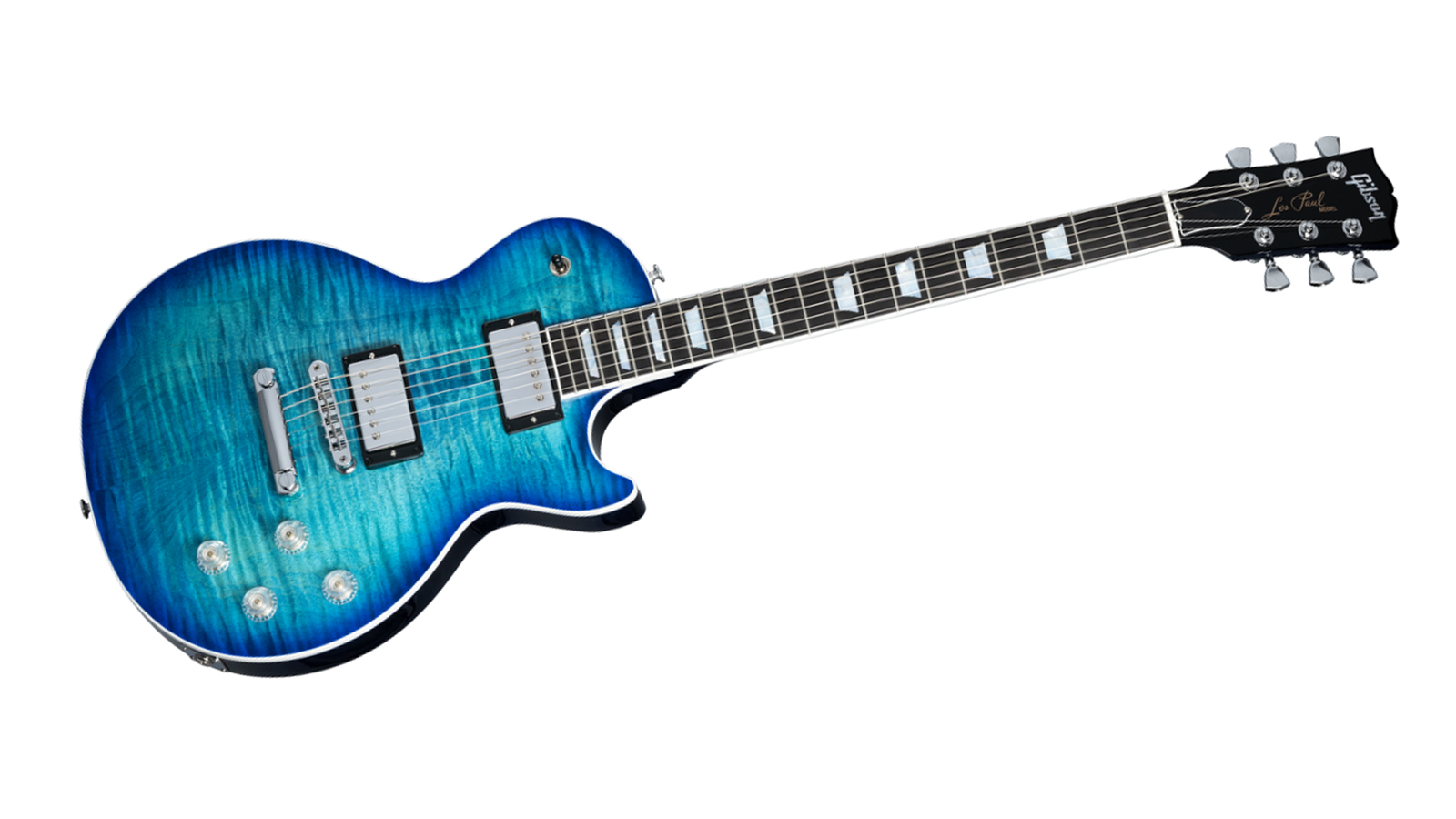
Specifications
Reasons to buy
Reasons to avoid
Gibson has always been cutting-edge, and the Les Paul Modern proves they are still innovating. This contemporary instrument is loaded with features that take the Les Paul into a new sonic place.
This guitar is built for comfort and speed, and the ultra-modern weight relief means this instrument is no longer a back-breaker - read more on our favorite lightweight Les Paul alternatives. The contoured heel joint gives unprecedented access to the higher frets, and the asymmetrical neck profile and compound radius ebony fingerboard give this guitar an incredibly slinky feel, which is a joy to play - especially for fast playing or metal.
So if you find yourself longing for a Les Paul with modern playability, then this is definitely the Gibson for you.

"The Modern Figured adds considerably more sounds with additional clarity and width, and some nice touches such as that contoured heel."
Read our Gibson Les Paul Modern figured review
Best Les Paul for the studio
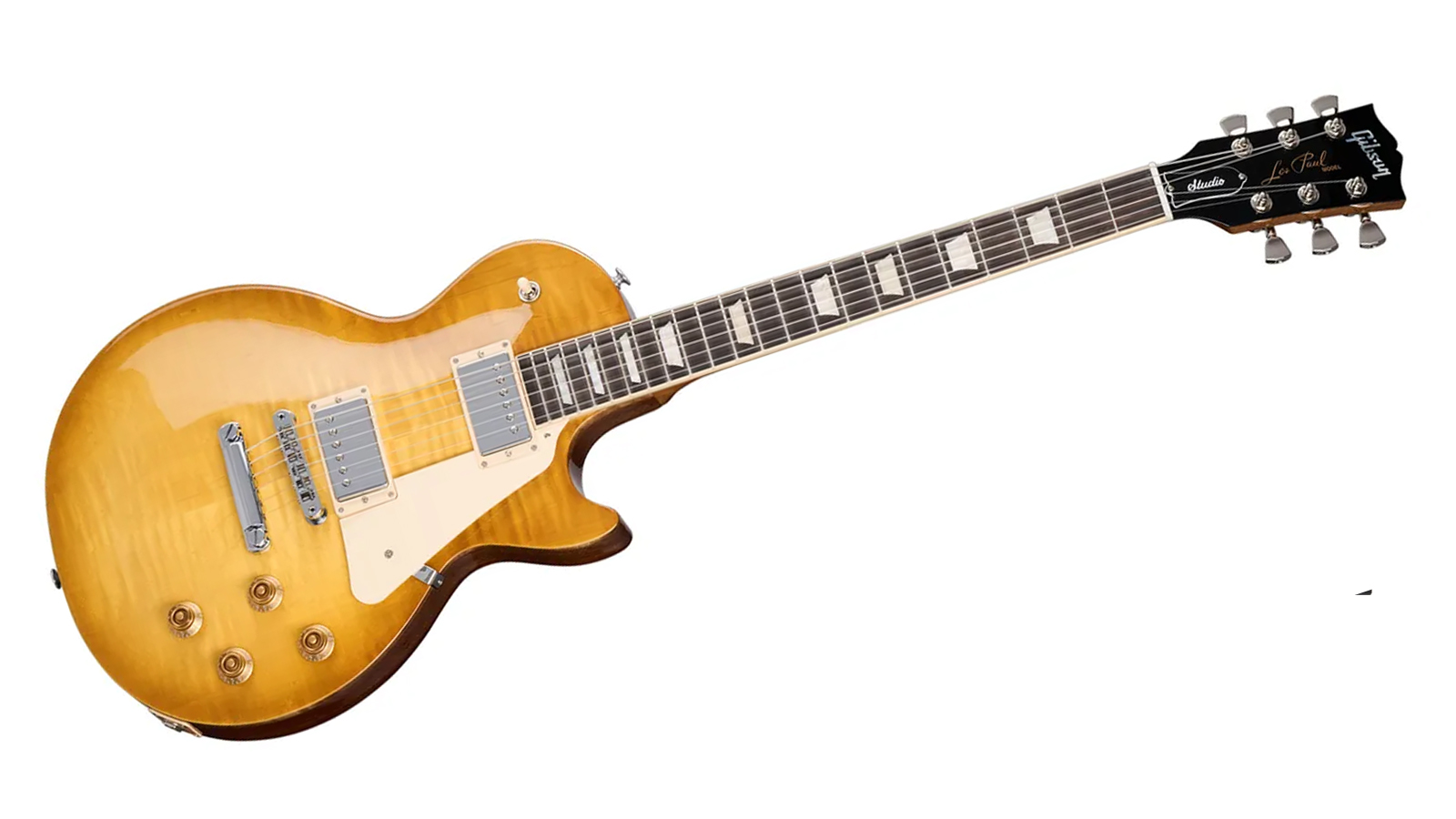
3. Gibson Les Paul Studio Session
Our expert review:
Specifications
Reasons to buy
Reasons to avoid
Originally conceived as a more affordable, basic version of the Standard, the Les Paul Studio has developed a reputation all of its own since its debut in 1983. The term "studio" comes from the idea that no one cares what your guitar looks like in the recording studio, it's what it sounds like that matters - and this bare-bones guitar sounds like a Les Paul!
This simple electric guitar isn't just for the recording studio. Many notable players have used them on tour. You can often see Jade Puget of AFI or Frank Iero of My Chemical Romance putting these guitars through their paces on stages worldwide.
My current favorite iteration of the Studio is the Studio Session, which features a ebony fingerboard and slim taper mahogany neck and a mahogany body with the Ultra-Modern weight relief. The 57 Classic humbucking pickups provide the high-output you want from a modern Les Paul, and the two push-pull pots offer a coil-tapping option, meaning this guitar is the perfect companion in the studio.
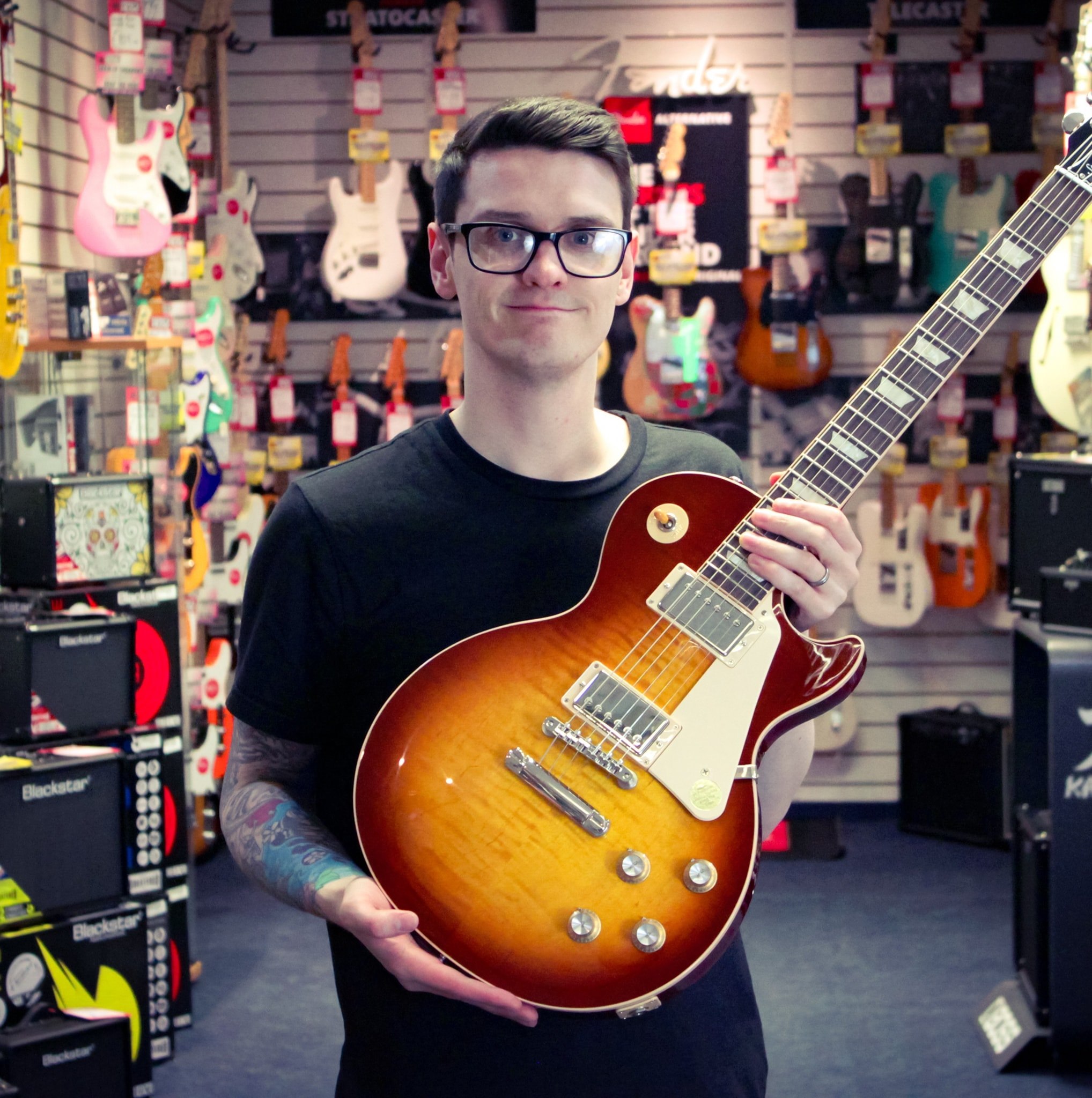
"The Studio Session is a gorgeous guitar, both sonically and aesthetically. The 57 Classic pickups deliver the famous Les Paul snarl in abundance, while the AA-flame top is good enough to make a Standard jealous. Throw in superb playability and more than a few modern appointments, and you get the best Studio in the Gibson catalog."
Read my full Gibson Les Paul Studio Session review
Best Les Paul for punk
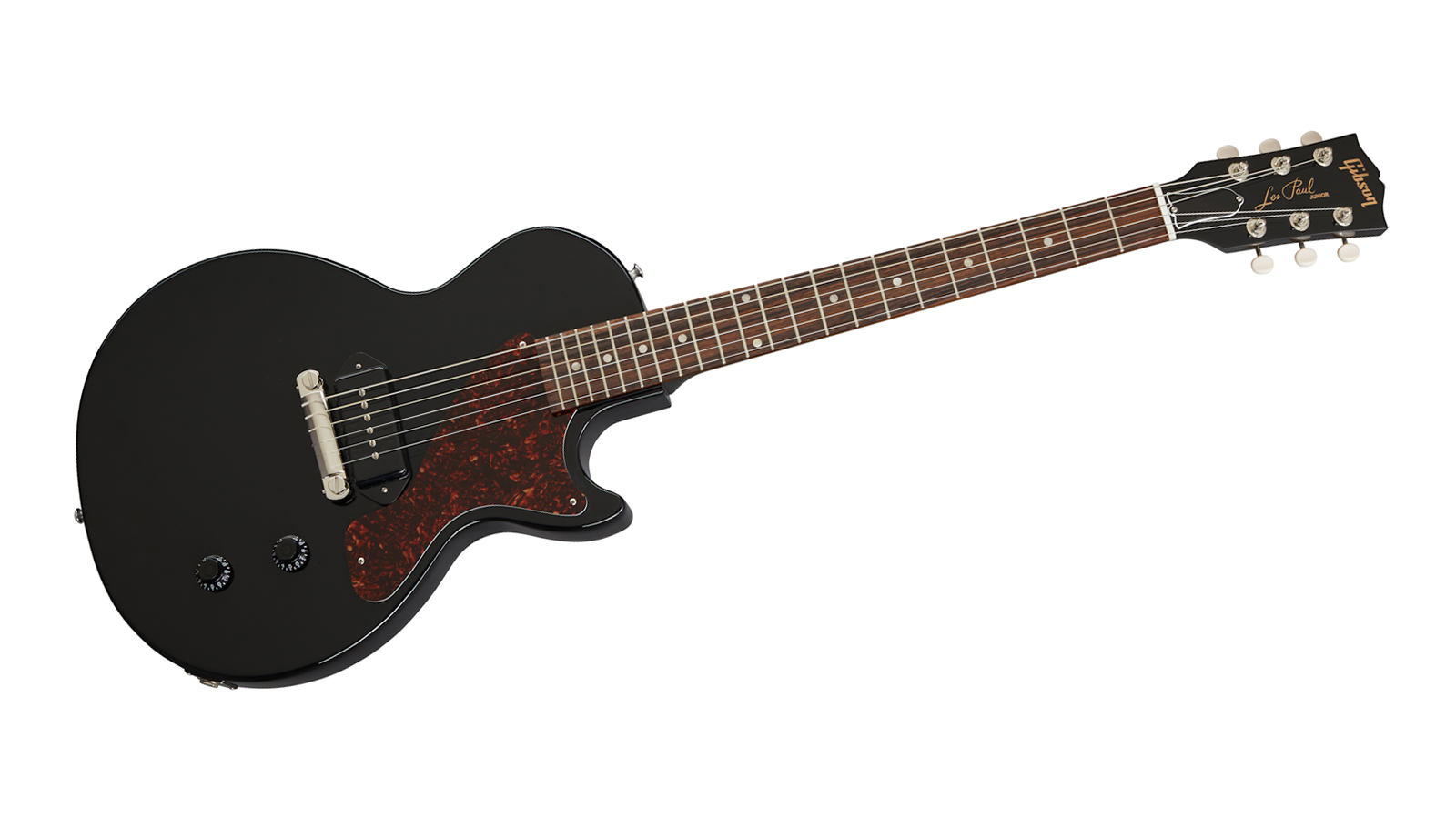
4. Gibson Les Paul Junior
Our expert review:
Specifications
Reasons to buy
Reasons to avoid
When Gibson released their new student model way back in 1954, they could never have imagined that not only would it still be around today, but that it would be a firm favorite of many punk and rock guitar players. This beautifully simple instrument has long been associated with hard-hitting players such as Billie Joe Armstrong of Green Day to Charlie Starr of Blackberry Smoke, and many others.
Sometimes simple is better, and this guitar really is as simple as it gets. The single-cut mahogany body houses a solitary dogear P-90 pickup, single volume, and tone control, as well as a vintage-style nickel wraparound bridge. Don't let the lack of features fool you. This guitar certainly packs a punch, and backing off your tone or volume can get a wide range of sounds out of its limited set-up.
Best for retro tones
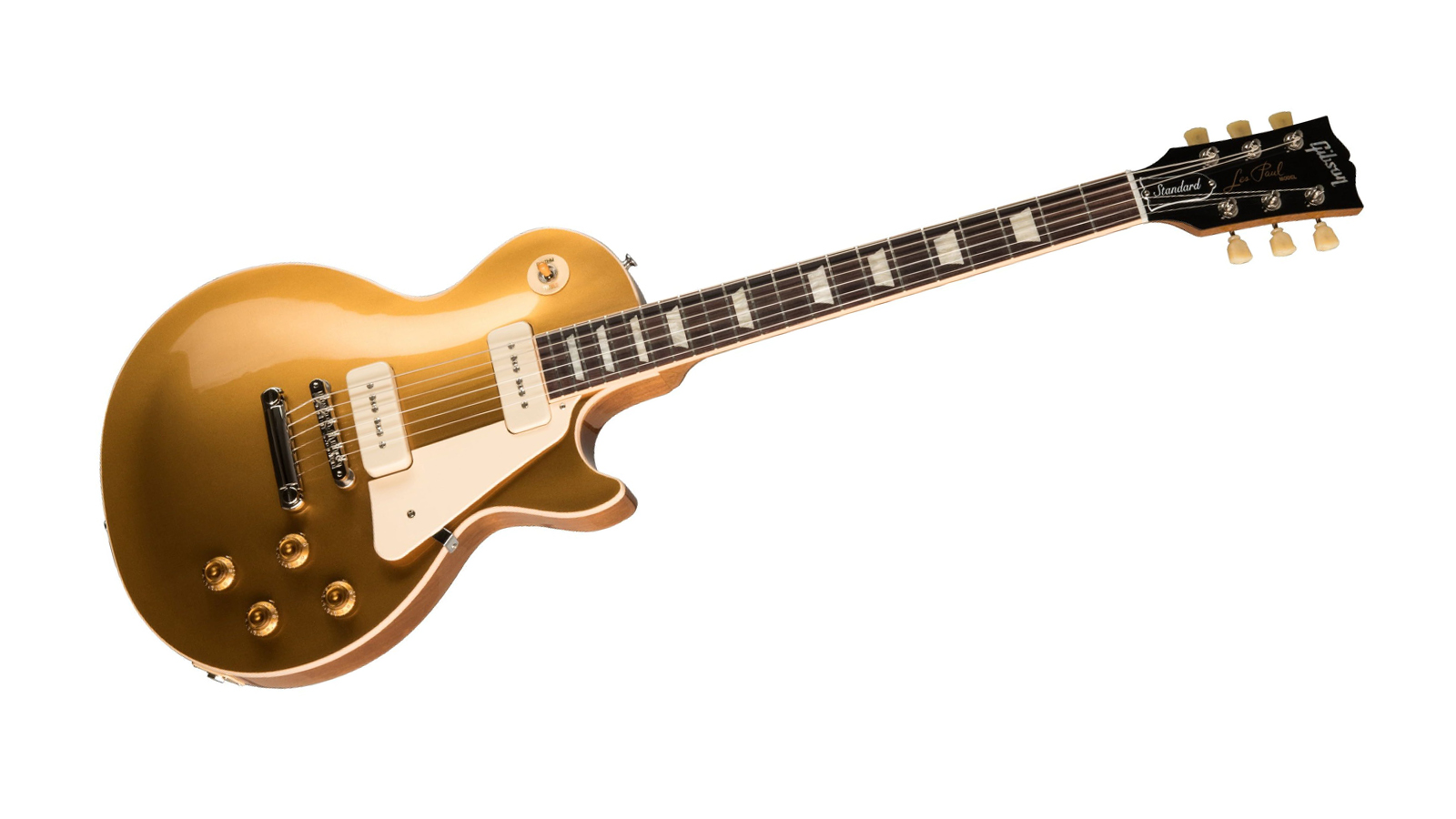
5. Gibson Les Paul Standard '50s P-90 Gold Top
Our expert review:
Specifications
Reasons to buy
Reasons to avoid
First of all, how stunning is this Les Paul? This beautiful guitar pays homage to the LPs of the early '50s, without the insane price tag of an original vintage example.
Like the 60's Standard, this guitar features a solid mahogany body with a maple top, but this time it comes with a larger 50's-style mahogany neck and a dual set of P-90 pickups. The sweet sound of these pickups is the result of the Alnico V magnets, audio taper potentiometers, and orange drop capacitors.
You may not have the budget for an authentic vintage gold top, but you can still get the look and sound with the Gibson Les Paul Standard '50s P-90.
Best with satin finish
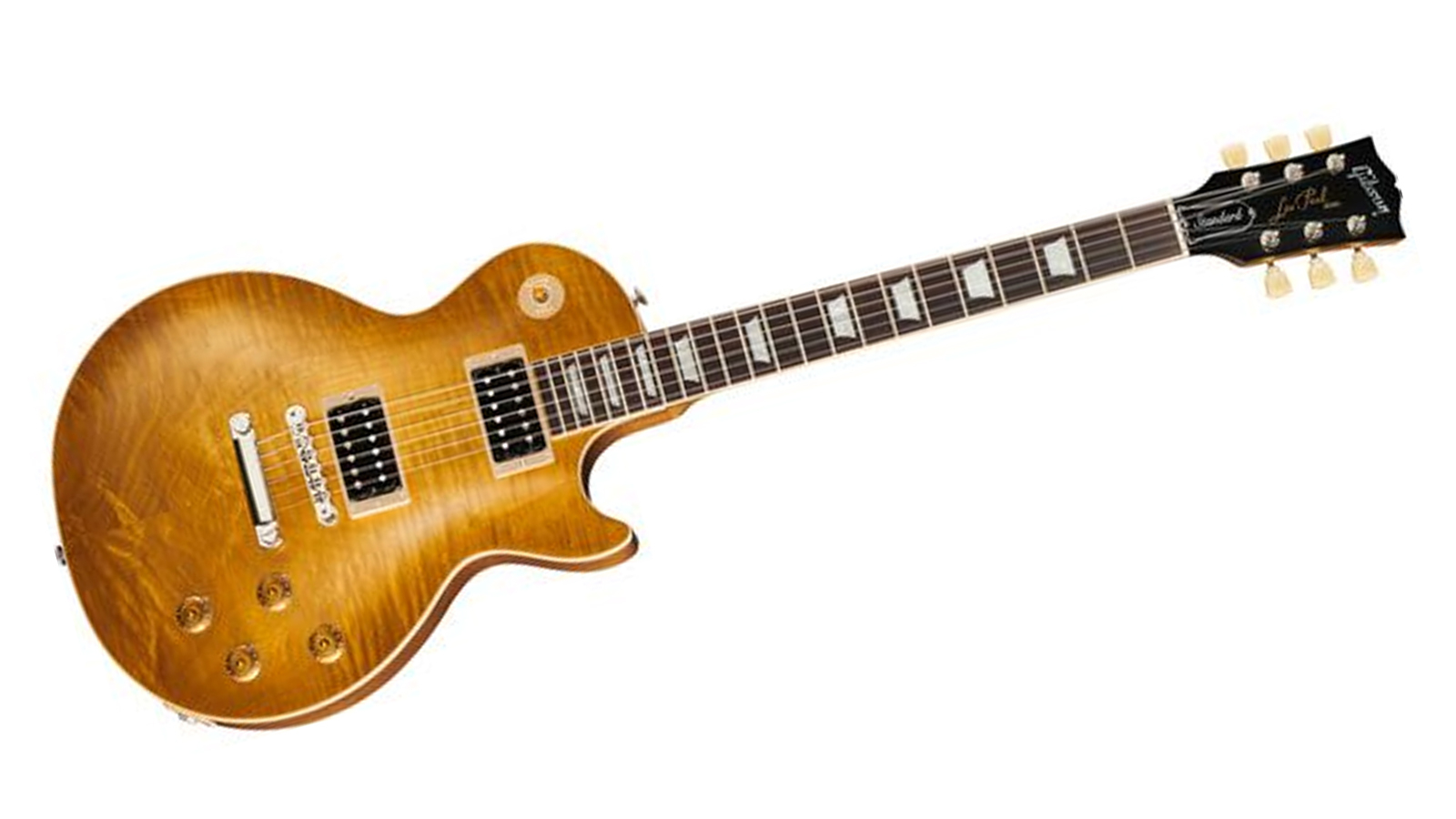
Specifications
Reasons to buy
Reasons to avoid
Finally, Gibson's faded Series is back, and we must say, we are mighty impressed with the latest offering. While the Series boasts a trio of models - two LP variations and the SG Standard '61 Faded Maestro Vibrola - we are concerned with the Gibson Les Paul Standard '50s Faded today.
This '50s-inspired LP is fairly similar to the Standard that already resides in the Gibson catalog, but there are a few key differences. The significant distinction is the au naturel satin nitro finish and the absence of pickup covers and a pickguard - resulting in a less glossy and flashy LP.
While these stripped-back guitars offer a rawer feel than the Standard, they offer a more boutique-like vibe than we were expecting.

"On the one hand there’s a raw, stripped vibe to the Les Pauls that shouts ‘gig me’, but to be honest there’s a more boutique-like vibe going on here."
Read my full Gibson Les Paul Standard '50s Faded review
Best with '59 specs
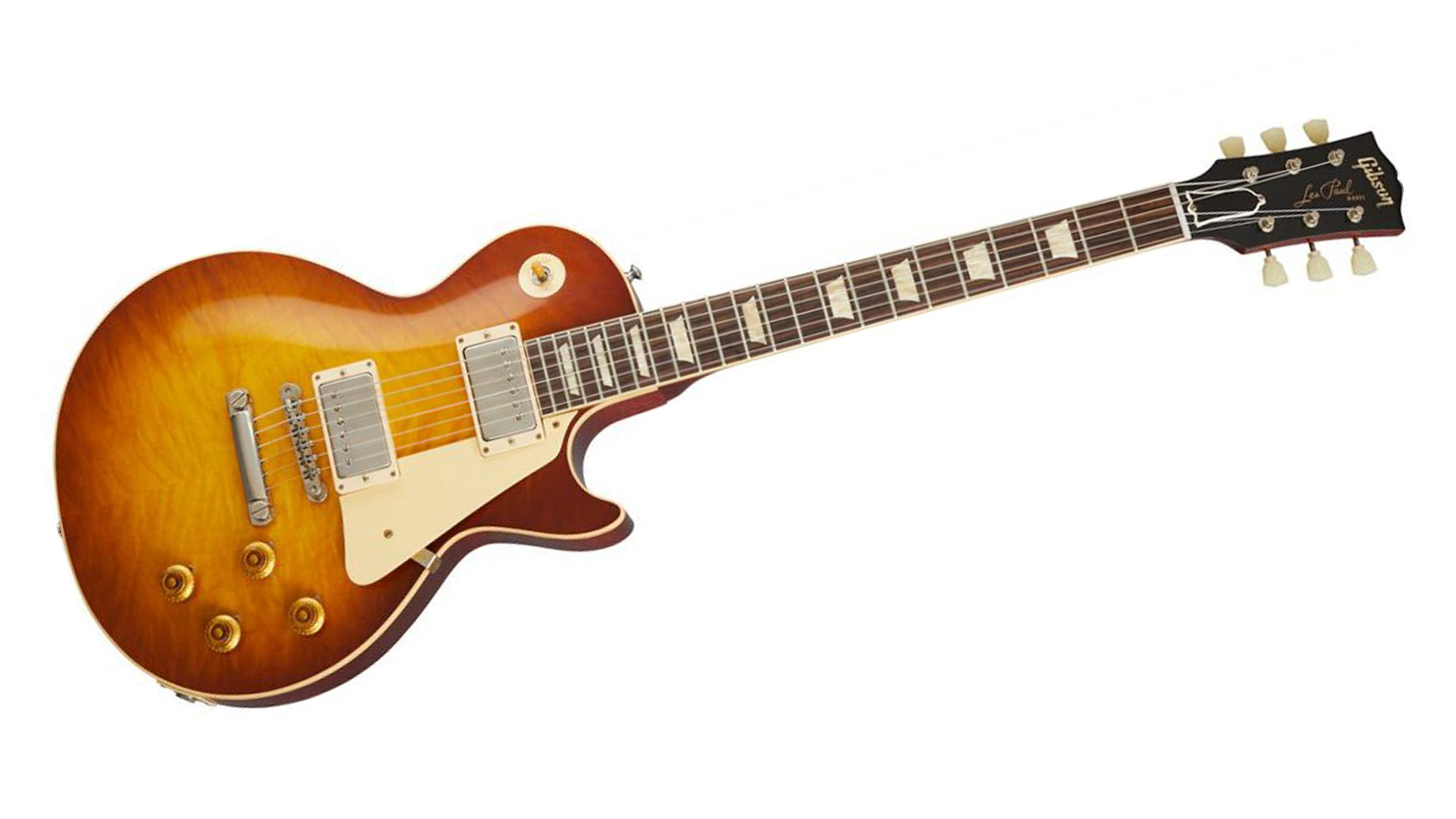
7. Gibson Custom Shop 1959 Les Paul Standard Reissue
Our expert review:
Specifications
Reasons to buy
Reasons to avoid
Often referred to as the "holy grail" of electric guitar, the '59 Les Paul is one of the most coveted instruments of all time, with originals easily going for $/£100,000. These guitars were created during Gibson's golden era and have been the weapon of choice for so many rock gods, such as Slash, Jimmy Page, Joe Bonamassa, and Bernie Marsden.
If you're anything like us, then you don't exactly have a spare 100k sitting around - and even if you did, there's no way you'd blow it on a single guitar - well, the next best thing would have to be the Gibson Custom Shop 1959 Les Paul Standard Reissue.
The clever people over at the Gibson Custom Shop have meticulously recreated every detail of this priceless vintage guitar. From using lasers to scan the original dimensions, to the use of period correct hide glue, and even going as far as to recreate the plastics down to a molecular level, they really have tried to capture every detail of this rare guitar.
Best with aged finish
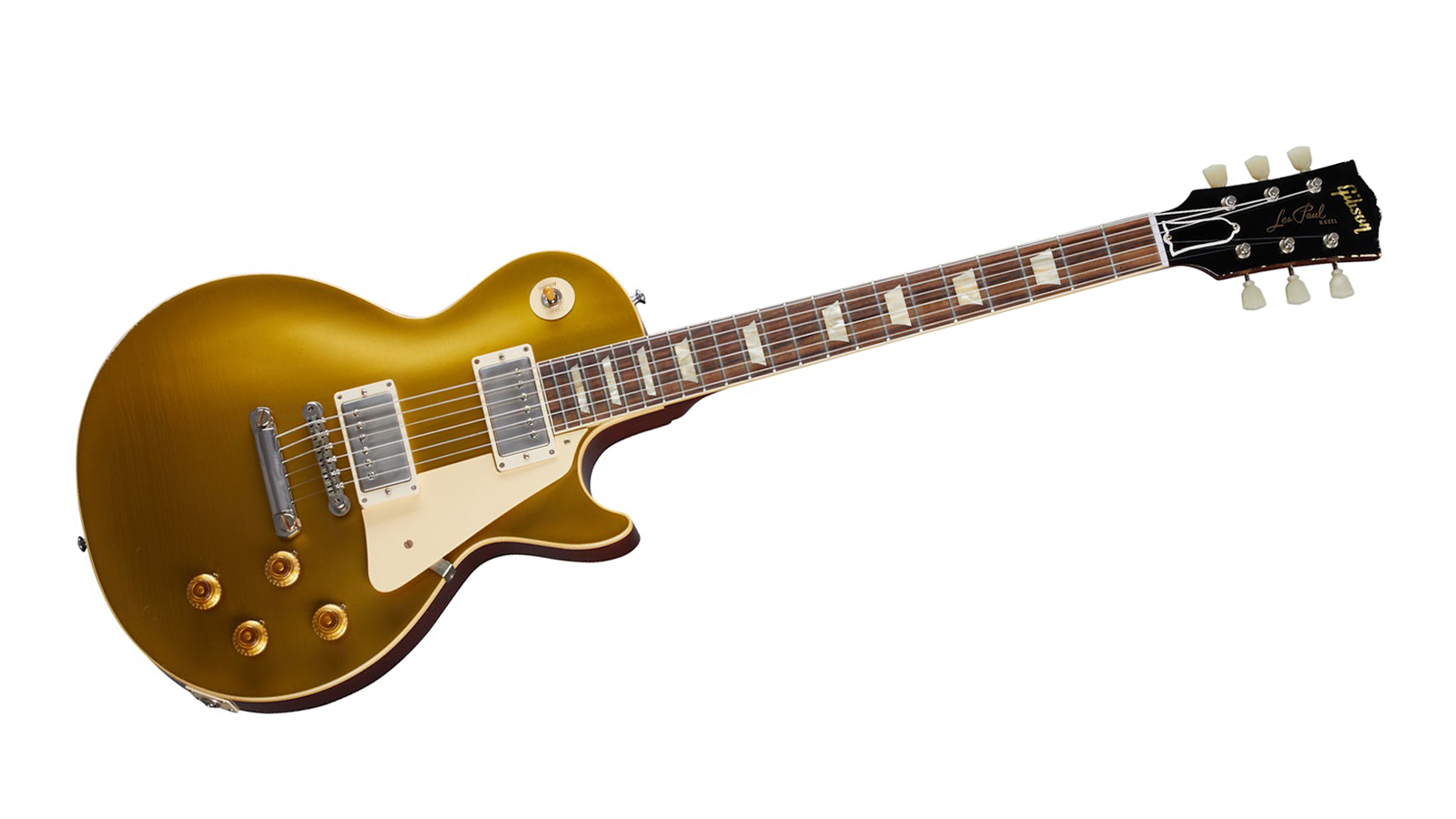
8. Gibson Custom Shop 1957 Les Paul Goldtop Murphy Lab Aged
Our expert review:
Specifications
Reasons to buy
Reasons to avoid
If you thought the '59 was accurate to its vintage counterpart, then the Murphy Lab takes it to a whole new level. The brainchild of master builder and guitar aging pioneer Tom Murphy, the Murphy Lab has one goal - to make highly precise aged guitars indistinguishable from the originals.
If you have ever been lucky enough to play an original gold top, you'll probably have noticed that the finish has cracked. This is referred to as "checking." This is a reasonably common phenomenon found on nitrocellulose finish guitars. The Murphy Lab has managed to expertly recreate the look and feel of this, bringing an air of authenticity to this Les Paul. Even the light aging around the headstock, and yellowing lacquer over the Gibson logo, make this guitar feel like a true vintage example.
We’re well aware that this process isn't for everyone. Still, if you're looking for a custom shop guitar with an added level of detail, then it's worth looking at a Custom Shop Murphy Lab Les Paul.
A brief history of the Les Paul
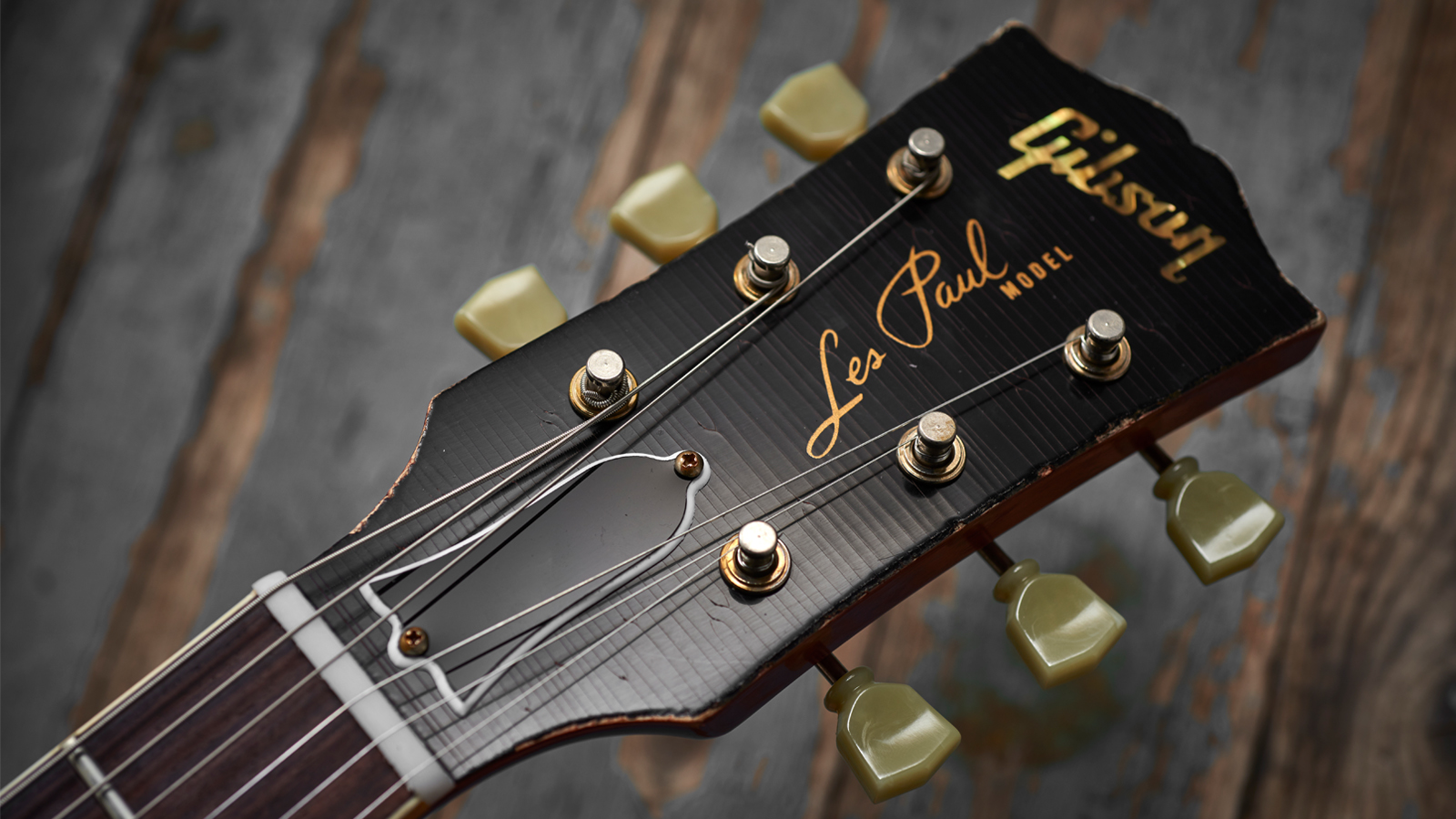
The Gibson Les Paul has gone through many, many changes over the years. Quite frankly, we don't have time to go through every variation, so let's just discuss the most critical milestones in the evolution of the most famous single-cut guitar of all time.
Making its debut in 1952, the "Les Paul Model" was the creation of Ted McCarty, John Huis, and Les Paul. Although there are varying stories about this, depending on who you ask… Some say Gibson had the final design before contacting Les, and some say Les came up with the design himself.
We know that Les approached Gibson in 1941 with an idea for a solid-body guitar - The Log. Gibson, uninterested at the time, didn’t take Les up on his new invention. Fender would ultimately beat them to the punch with the release of the Broadcaster/Telecaster. In an attempt to catch up to their Californian rivals, Gibson needed a solid-body guitar, and they needed it fast. They would eventually team up with the seasoned inventor, and thus, the “Les Paul Model” was born.
Beloved for their insanely good looks, unbeatable playability, and the definitive Les Paul tone, these guitars sell for upwards of $/£100,000.
This version of the Les Paul featured a trapeze tailpiece and a set of "soap bar" P-90 pickups. It was also gold - yes, that's right, the first Les Paul models were all Gold Tops. The classic sunburst finish didn't come into production until much later, but we’ll get to that.
By 1957 the Les Paul went through some significant changes. Now sporting a set of PAF (patent applied for) humbucker pickups and the far more recognizable Tune-O-Matic bridge and tailpiece.
1958, 1959, and 1960 would see the release of the "burst." A group of sunburst Les Paul's that would go on to be among the most sought-after guitars of all time. Beloved for their insanely good looks, unbeatable playability, and the definitive Les Paul tone, these guitars sell for upwards of $/£100,000.
So with guitars this good, the next few years must have been looking good for the Les Paul? No. It's unfathomable now, but these guitars really weren't that popular back in the day. The sales of the Gibson Les Paul had been steadily declining for years. Gibson needed to do something drastic to keep up with the rising popularity of the Fender Stratocaster. This led us to the Les Paul redesign - the SG. Although still bearing the Les Paul name, the guitar we now know as the SG would take on the mantle for the next few years. Gibson would later re-introduce the Les Paul in its single-cut glory in 1968.
Since then, Gibson has been churning out an array of Les Pauls at differing price points, from various factories over the years, from Kalamazoo, Nashville, and Memphis. We could go on all day about the history of the Gibson Les Paul, but let's leave it there and move on to some buying advice.
Buying advice
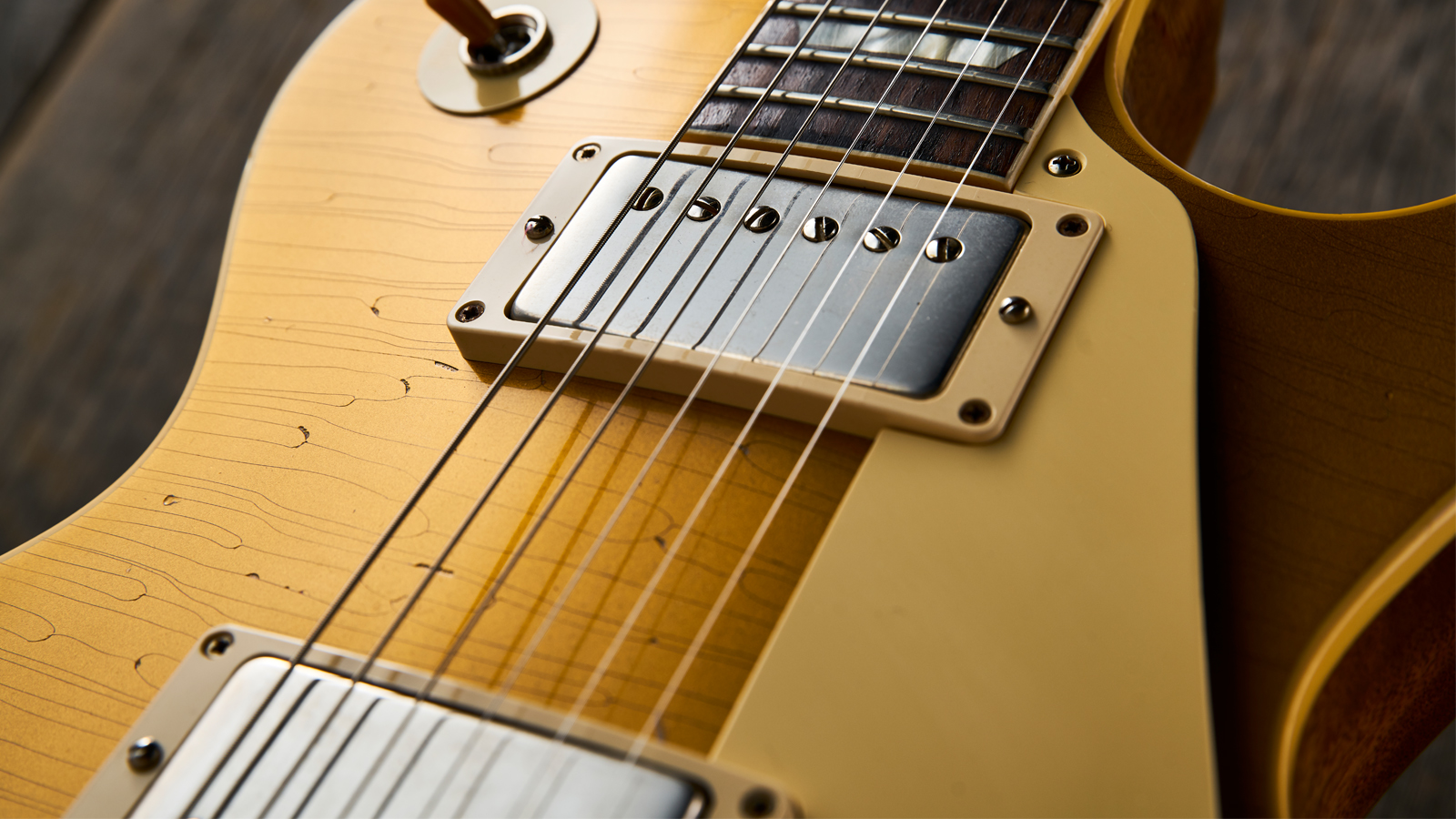
We know that buying a Les Paul can be daunting. At the end of the day, these are expensive guitars, and you want to make the right choice. Don't worry, we have your back. Here, we will discuss a few things to bear in mind when purchasing your new Les Paul.
Les Paul neck profiles
You can trust Guitar World
If you have been looking at Les Pauls for a while, you'll have noticed that Gibson offers different neck profiles. These range from the slim-taper 60's neck to the chunky 50's profile. There is no right or wrong neck for you. It really is a personal preference. Suppose you’re unsure which is suitable for you. In that case, we recommend sticking to the more universally loved '60s profile, as this fits most players' needs. If you’re looking at vintage reissue guitars, you won't get a choice, as they come with the neck profile that is correct for the era it's reissuing.
Pickup choice
Next, you need to find your sound, and this comes in the form of the pickups in your Les Paul. If you want to nail the searing classic rock tones, then seek out the PAF-style humbuckers. Perhaps you favor the bold attack of the P-90, then it's worth looking at a Les Paul Junior, Special, or '54 reissue. Gibson offers a few Les Paul's with a high-output pickup option for the modern player, perfect for bringing the house down with high-gain riffage.
FAQs

How much does a Gibson Les Paul weigh?
It's no secret that the Les Paul is a heavy guitar, but don't worry if back problems are stopping you from getting the guitar of your dreams. Gibson has a few models in their extensive catalog that utilize the "ultra-modern weight-relief." This process is usually found on the "modern" series of instruments. It uses a series of small chambers to keep the weight down and make the guitar more manageable.
If you’re a traditionalist, and this sounds like something you'd like to avoid, there are plenty of guitars on offer that come with zero weight relief.
Looking to ease the strain on your back? Here are five lightweight alternatives to the Gibson Les Paul.
How do I look after a nitrocellulose finish?
All Gibson guitars use nitrocellulose lacquer. Although great for allowing the guitar to "breathe" and aiding in the resonance of the instrument, this finish does have its drawbacks. The main point to remember is that it can react with rubber - especially the rubber on cheap guitar stands! This is called "stand rash" or "nitro-burn" and is basically a chemical reaction between the stand and the guitar. So if you’re looking to have your new prized possession on show, we highly recommend getting a nitro-safe guitar stand. The Hercules brand of stands is our go-to.
It's also worth mentioning that dramatic temperature changes can have a detrimental effect on your guitar's shiny new finish, so keep the guitar at room temperature. If you're going from a cold environment to a warm one, then let the guitar acclimatize before opening the case. While you're at it, it's probably a good idea not to get your new guitar wet or feed it after midnight.
So there you have it, that's our guide to the best Gibson Les Pauls on the market right now. There is only one last thing to do - crank your Marshall stack, plug in, and let rip!
What the pros say
Okay, so you've heard us wax lyrical about the beauty of the Les Paul, but here's what some of the world's best guitar players have to say about this iconic Gibson instrument. Below, you'll find a selection of interviews we've conducted over the years with our favorite players – each telling stories of their favorite Les Paul.
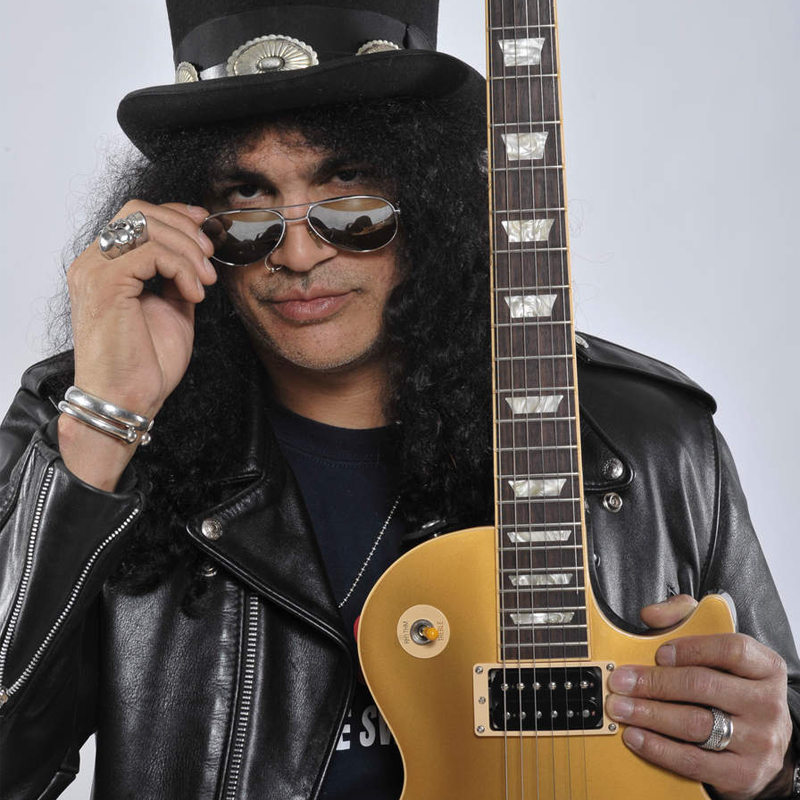
Speaking to Total Guitar Slash said he was naturally drawn to the feel and sound of the Gibson Les Paul.
“They are definitely magical instruments... I think all guitar players, or at least most of us, start off by trying to find the instrument we’re most comfortable with. I just naturally gravitated to a Les Paul not knowing that much about guitar sounds at the time. I really didn’t have any experience or any real knowledge of what everybody was doing or about equipment in general. But it seemed like I was attracted to what I thought a Les Paul sounded like.”

As the Sum 41 frontman told Guitar World in his most recent interview, he has a special connection with his ’68 Gibson Les Paul Goldtop.
“As you spend time with this Les Paul, you really start to get to know it – especially how it reacts to different amps. Not only is it such a cool guitar in terms of history and how it literally changed my life 20-something years ago, the second I started playing it, I knew it sounded incredible. No matter what you plug it into, it ends up being the guitar you want to use for everything.”

As one of the best guitarists on the planet and one of the most famous six-string collectors around, Joe knows a thing or two about Les Pauls – and is particularly fond of P90s.
"Let’s start off with a 1954 Gibson Goldtop Les Paul, fitted with single-coil P-90 pickups. To me, P-90s produce a very distinct tone, one that I equate with early Freddie King as the “blues machine” sound. Muddy Waters played a Goldtop with P90s in his early days, as did Mike Bloomfield before he graduated to a sunburst Les Paul Standard with PAF humbucker pickups, which is a distinctly different sound."
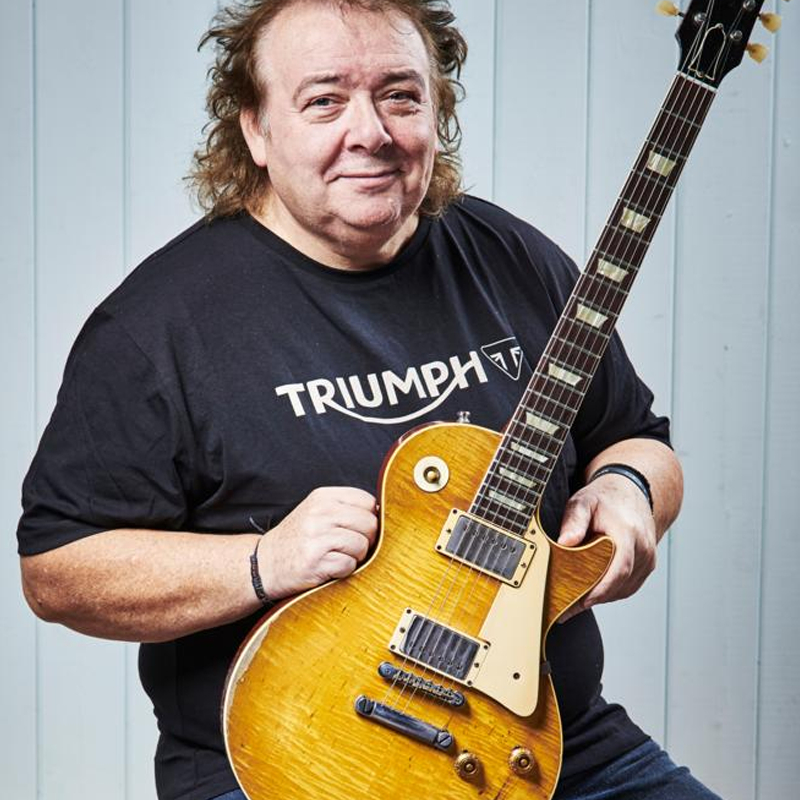
Bernie Marsden had long been a lover of Les Paul, but he just so happened to acquire his beloved '59 by chance. Marsden told Guitarist the story.
“A guy produced it [for me] at a gig at the Marquee, tuned it up and said 'use it for the encore,' Marsden tells Guitarist in the video. “I had already said I couldn't afford it, but he tuned it up for me and I plugged it in, and it was stupendous. As I came off the stage, I said 'How much do you want for it?' – he wanted the princely sum of about 600 pounds, which I could not afford.”

Hammett is the new owner of one of the most famous Les Pauls ever produced, and in this Guitarist interview, he tells us what it was like when he first got to play it.
“After about 30 seconds,” he says, “I thought to myself, ‘Wow, this is not your standard Les Paul…’ and I went to the middle position, because, you know, that’s the revered sound, and I started ripping out, and I thought to myself, ‘Holy shit, this is a total contradiction."

When it comes to jazz-rock, few Les Pauls are as storied as Al Di Meola’s 1971 Les Paul Custom – he tells Guitar World the story of his famous axe.
“I started using Les Pauls early on, probably because I’d seen Jeff Beck using one around the beginning of his career. There were some heavy metal acts, too. The Led Zeppelin II album was pretty much a Les Paul all the way and it just had this massive sound. “One of my most famous guitars is my 1971 Les Paul Custom. I ordered it from Manny’s Music store in New York when I was in my last year of high school."
How we selected the best Gibson Les Pauls
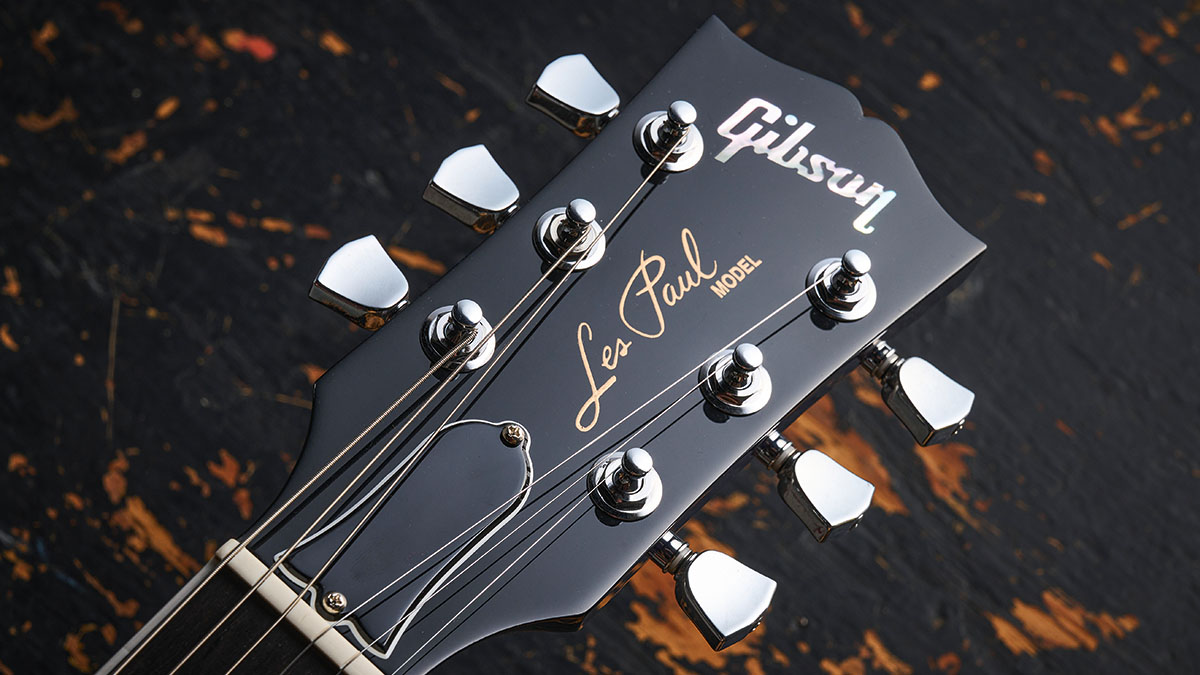
Here at Guitar World, we are experts in our field, with many years of playing and product testing between us. We live and breathe everything guitar and bass related, and we draw on this knowledge and experience of using products in live, recording and rehearsal scenarios when selecting the products for our guides.
When choosing what we believe to be the best Gibson Les Pauls available right now, we combine our hands-on experience, user reviews and testimonies and engage in lengthy discussions with our editorial colleagues to reach a consensus about the top products in any given category.
First and foremost, we are guitarists, and we want other players to find the right product for them. So we take into careful consideration everything from budget to feature set, ease of use and durability to come up with a list of what we can safely say are the best Gibson Les Pauls on the market right now.
Read more about our rating system, how we choose the gear we feature, and exactly how we test each product.
Why trust us
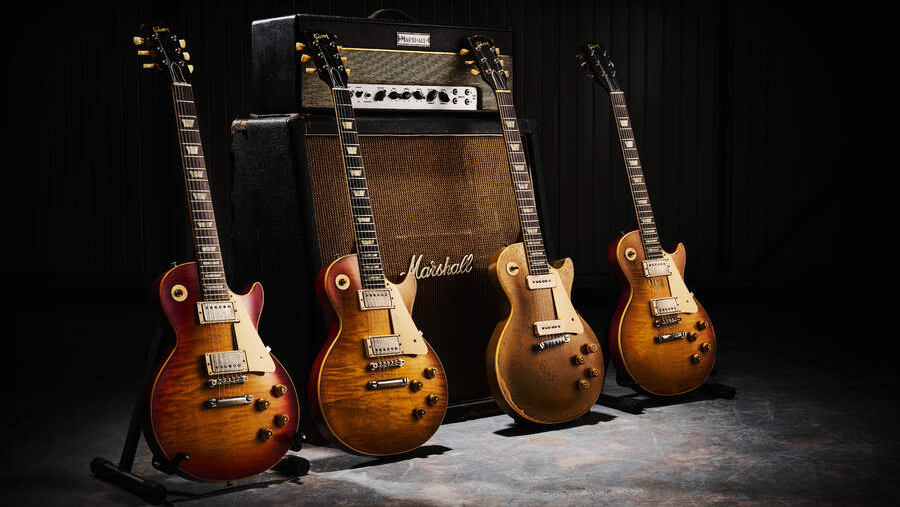
☑️ A global audience of 3.8 million guitarists monthly
☑️ 1,200+ reviews on GuitarWorld.com
☑️ 30+ years of product testing at Guitar World
Guitar World boasts over 44 years of expertise and stands as the ultimate authority on all things related to guitars. The magazine and website feature expertly written gear round-ups and top-quality, authoritative reviews penned by a team of highly experienced industry professionals.
Guitar World's inaugural print issue hit the shelves in July 1980, and ever since, it has been captivating players and enthusiasts with engaging lessons, insightful interviews with the biggest guitar heroes, and priceless buying advice for newbie players.
Furthermore, GuitarWorld.com continues this legacy online and serves as the hub of the world's foremost authorities on guitar playing. The site not only hosts content from Guitar World but also showcases articles from respected publications such as Guitarist, Total Guitar, Guitar Techniques, and Bass Player. With a reach extending to 3.8 million players each month, GuitarWorld.com is a go-to destination for guitar fanatics globally.
Below, you'll find more information about the expert author of this guide.

Daryl is a Senior Deals Writer at Guitar World, where he creates and maintains over 200 buyer's guides, finds the best deals on guitar products, and tests the latest gear. His reviews have been featured in prominent publications such as Total Guitar, Future Music magazine, and MusicRadar.com.
Daryl has a strong passion for guitars, particularly Gibson models. His collection currently includes around 25 guitars, 13 of which are classic Gibson examples. This collection features a trio of Firebirds, multiple SGs, a stunning ES-335, ES-339, J-45, Explorer, Flying V, a striking Les Paul Standard, and many more. Daryl truly loves his Gibson guitars.
Throughout his career, Daryl has been fortunate to interview many of his musical heroes, including Slash and members of The Offspring, Foo Fighters, Sum 41, Thrice, and others. Previously, Daryl worked in music retail for nearly a decade, where he advised everyone from absolute beginners to seasoned professionals on selecting the right gear for their needs.
Related buyer's guides
- Epiphone vs Gibson: what's the difference?
- Check out the best cheap electric guitars under $500
- Bigger budget? Try the best electric guitars under $1,000
- Blow the budget with the best high-end electric guitars
All the latest guitar news, interviews, lessons, reviews, deals and more, direct to your inbox!

Daryl is a Senior Deals Writer at Guitar World, where he creates and maintains our 200+ buyer's guides, finds the best deals on guitar products, and tests the latest gear. His reviews have been featured in prominent publications like Total Guitar, Guitarist, Future Music magazine, and MusicRadar.com.
During his career, he has been lucky enough to talk to many of his musical heroes, having interviewed Slash and members of Sum 41, Foo Fighters, The Offspring, Thrice, and more. In a past life, Daryl worked in music retail. For a little under a decade, he advised everyone from absolute beginners to seasoned pros on the right gear for their needs.
Daryl is a fully qualified sound engineer, holding a first-class Bachelor's degree in Creative Sound Production from the University of Abertay.
